Can Livestock Reverse Desertification?
Desertification, characterized by land degradation resulting in the transformation into desert-like conditions, poses a significant threat to urban societies, the global economy, and various industries, as noted by Allan Savory.
Despite its severity, this phenomenon remains poorly grasped, often subject to misconceptions and oversimplified remedies. This interview with Allan Savory explores desertification and how livestock and herbivores could help reverse it.
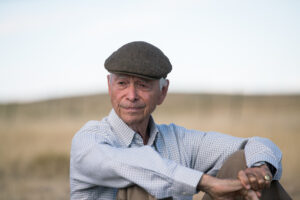
Allan Savory highlights that as our understanding of desertification deepens, it becomes evident that dependence on technology and fire only worsens the situation without offering solutions. If neither fire nor technology can effectively tackle the desertification issue, and humans lack alternative tools for environmental management, what alternative approaches could reverse desertification?
Allan Savory, a renowned ecologist and founder of the Savory Institute, has dedicated his life to understanding and solving the problem of biodiversity loss, which, among other factors, is fueling climate change by leading to desertification over most of Earth’s land area.
In the context of the publication of the documentary “Livestock or Desert” (by Francisco Vaquero Robustillo with Gustavo Alés), Captain Forest had the immense honor of interviewing Allan Savory, who explains how we could reverse desertification.
Q: What is the desertification phenomenon?
Desertification refers to the environmental degradation of human and wildlife habitats, ultimately transforming the affected areas into desert-like landscapes.
This phenomenon occurs when the land deteriorates significantly. Regrettably, severe environmental degradation can also occur in tropical forests and oceans, representing a parallel concern. Despite the similarities, we don’t perceive such forest or oceanic deterioration as transforming into a desert.
Similarly, in regions like England, Germany, France, and other parts of Europe characterized by more perennial humidity and reliable year-round rainfall, the landscape resists turning into a desert, regardless of management practices.
Unfortunately, this term, “desertification,” seems tied to regions with seasonal rainfall patterns, particularly where rainfall is also low, which covers most of Earth’s land area.
Q: How could livestock management reverse desertification locally?
Because desertification is fundamentally a biological issue, it can only be addressed using biological methods, which primarily involve the use of animals, namely livestock. Since I first realized this in the 1960s, it has been a subject of intense controversy.
For millennia, we attributed the spread of deserts to an overabundance of sheep, goats, and cattle—a belief that became entrenched as scientific truth, immune to questioning.
After a decade of studying biodiversity loss in national parks, akin to what would be termed “rewilding” in Europe, I concluded that livestock could offer a solution.
This epiphany, dating back to the 1960s, led me to believe that livestock, across most of the world’s land, held the key to reversing biodiversity loss and desertification, both of which fuel climate change.
However, I faced a formidable challenge because the prevailing belief, propagated by fellow scientists and universities, was that desertification stemmed from overgrazing by an excess of sheep, goats, and cattle.
Indeed, every historical instance seemed to confirm this notion. I resolved this dilemma by uncovering the insights of the French scientist Andre Voisin, whose work—published in five languages—revealed that overgrazing was not solely determined by the number of animals but rather by the timing of their interaction with plants.
Drawing on Voisin’s findings and observations of wildlife behavior, I devised a grazing planning process modeled on a technique of planning devised after centuries of European military experience.
This technique enables people to use livestock to reverse biodiversity loss and desertification, whether on small farms or vast regions under traditional pastoralist practices honed over centuries of experience.
Today, this approach is known as Holistic Planned Grazing, and its efficacy has stood the test of time, never faltering in its ability to combat desertification.
Q: How did you discover that using livestock could reverse desertification?
I discovered by accident that using livestock could reverse desertification while pursuing an observation. Feeling desperate for solutions as our efforts to reverse desertification with wildlife seemed futile, two American wildlife professors and I were exploring new avenues when I came across a rancher experimenting with a novel idea proposed by South African botanist John Acocks.
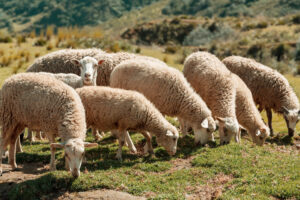
Acocks posited that South Africa was desertifying due to too few sheep rather than too many. He believed that the selective grazing habits of sheep were causing the demise of certain plant species, leading to unfair competition. In contrast, he argued that large herds of wildlife had grazed indiscriminately in the past, preventing such selective destruction.
Though Acocks’ perspective incited controversy among various scientists, I decided to investigate further.
Visiting a ranch where his methods were implemented, I stumbled upon a small area that showed significant improvement. Upon closer examination, I discovered that this area had been briefly packed with sheep seeking shelter from a snowstorm.
At that moment, I witnessed firsthand what I had previously only observed in near-intact environments where the ecosystem was still functioning with pack-hunting predators and large herds of grazing wildlife in Africa.
Realizing the potential of livestock to achieve what was needed, I embarked on a journey to learn how to implement this approach effectively.
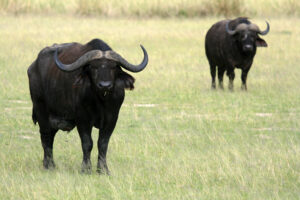
Later, I discovered that early Scottish shepherds referred to “the golden hooves of sheep,” and Dutch settlers in South Africa had a saying, “hammer veld (with hooves) to sweeten it.”
These observations laid the foundation for my understanding, emphasizing the importance of following up on such insights—a fundamental aspect of scientific inquiry.
Q: Why did humans exclude animals from fields and natural areas, such as forests?
The historical belief that too many animals inherently damage the land has persisted for millennia, becoming a scientific “truth” and conviction.
This conviction has permeated academia, environmental organizations, and broader society, fueling calls to exclude livestock from agricultural practices.
In contemporary discourse, various groups, including academics, vegans, environmentalists, and influential figures, have rallied behind the narrative linking climate change to emissions from fossil fuels and livestock.
This convergence has fueled a concerted effort against livestock, further exacerbated by legitimate concerns about animal welfare in industrial farming practices.
While acknowledging the deplorable treatment of animals in corporate-driven agriculture, it’s crucial to recognize the nuanced realities of nature. In the wild, the absence of humane intervention often results in cruel and prolonged suffering for animals.
Urban dwellers, advocating against cruelty to animals and urging refrain from killing them for consumption, often lack direct experiences with nature’s intricate balance.
Nature is not forgiving, and if left to die “naturally,” animals almost all die cruelly from starvation, thirst, disease, accident, or, if fortunate, from predation.
If we, as humans, intend to manage and utilize animals to foster biodiversity and support human civilization, it is imperative to approach this responsibility with profound humanity.
While pastoralists and farmers genuinely love and care for their animals and ensure a humane death, corporations and their shareholders driven by profit routinely neglect animal welfare and raise livestock in appalling conditions and suffering through most of their lives.
Q: What is the role of herbivores in ecosystems, and what are the risks of excluding them?
Environmental context
Herbivores, the plant-eating creatures of our world, span a diverse range of species, from the majestic whales filtering plankton in our oceans to the large grazing and browsing animals that roam the plains and forests of our continents.
In this discussion, however, our focus is narrowed to those terrestrial herbivores, particularly the larger ones, whose presence has played a significant ecological role throughout history.
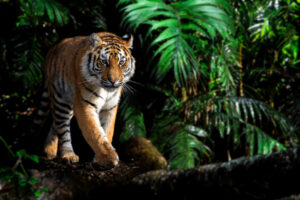 In the relatively smaller areas of the world covered by tropical forests, such as parts of Africa, Brazil, and Central America, most herbivores are insects, and large herding grazers with accompanying pack-hunting predators did not appear.
In the relatively smaller areas of the world covered by tropical forests, such as parts of Africa, Brazil, and Central America, most herbivores are insects, and large herding grazers with accompanying pack-hunting predators did not appear.
Such environments are characterized by solitary predators like tigers and relatively high humidity throughout the year.
However, most of the Earth’s landmass experiences seasonal rainfall and humidity. In these environments, large browsing and grazing herbivores, along with pack-hunting predators, evolved in synergy with plant and soil life.
Desertification tends to occur when the populations of these herbivores and their predators fall too low or are absent, leading to the malfunctioning of the ecological processes that sustain the ecosystem.
During the arid months, when most vegetation dies, the decline in the numbers of insects and microorganisms responsible for decay causes vegetation to shift from rapid biological decay to gradual chemical breakdown.
 London receives about the same rainfall over 12 months as Johannesburg over four months. However, due to its consistent rainfall distribution throughout the year, desertification cannot occur around London, with or without large herbivores.
London receives about the same rainfall over 12 months as Johannesburg over four months. However, due to its consistent rainfall distribution throughout the year, desertification cannot occur around London, with or without large herbivores.
In contrast, desertification can occur around Johannesburg if there are inadequate large grazing herbivores or a lack of pack-hunting predators. This highlights the critical role of humidity distribution in sustaining biodiversity across various regions.
Role of herbivores in ecosystems
Historical populations of large herbivores and their predators played a crucial role in environments with highly seasonal rainfall, such as the vast prairies, savannas, and grasslands covering about two-thirds of Earth’s land, including the extensive region from North Africa to India and up into China.
These animals coevolved with plant and soil life, forming synergistic biological communities.
Their presence facilitated the rapid breakdown of vast amounts of annually dying vegetation during drier months, preventing desertification through soil cover and rainfall retention.
Without adequate numbers of large herbivores and the herding behavior induced by pack-hunting predators, insect and microorganism populations cannot maintain the rapid annual biological decay essential to the cycle of birth, growth, death, and decay sustaining all life.
Risks of excluding herbivores in ecosystems
Predator and prey creatures have undergone a coevolutionary process alongside plant and soil life, forming biological communities characterized by synergy rather than competition for hundreds of millions of years.
While their precise roles defy simple definition, observations in wild regions, particularly in nearly intact environments in Africa, revealed a crucial aspect: their involvement in the decay phase of the life cycle—birth, growth, death, and decay—followed by regeneration.
This fundamental cycle deteriorated at decay, leading to alarming biodiversity loss and desertification.
In the past, the presence of sufficient herbivores, behaving in response to pack hunters, played a pivotal role in swiftly breaking down billions of tons of annually dying vegetation, particularly during the drier months. These animals’ actions—grazing, digestion, and trampling—upheld soil cover, retained rainfall, and deterred desertification.
Thus, with this understanding, the peril of diminishing, mainly removing, large herbivores becomes starkly apparent. This trend exacerbates the ongoing global crises of biodiversity loss, desertification, and mega-fires that intensify climate change alongside other factors.
Q: Does excluding animals increase the risk of having mega-fires in wild environments?
Indeed, as I have elucidated, the reduction and removal of grazing animals contribute significantly to desertification across vast expanses of the world’s land, regardless of whether they are labeled as “wild” or not.
This presents a formidable risk and exacerbates the burgeoning threat of Mega fires, which are increasingly prevalent. From my understanding, these Mega fires are now engulfing larger areas and reaching altitudes and latitudes where they rarely, if ever, occurred before.
As we exclude and diminish the populations of large herbivores, except in smaller pockets of tropical forests, we are witnessing a cascade of detrimental effects.
While Mega fires garner significant attention from the media, other consequences of desertification often go unnoticed. These include the heightened frequency and severity of floods and droughts, even without changes in rainfall patterns.
Another example would be some government policies that blame Bedouin culture for desertification and result in the removal of their sheep, highlighting the danger of prioritizing beliefs over scientific evidence in environmental management. Such policy inevitably results in ultimate social breakdown, emigration, and violence.
Q: Does it make sense to blame animals for overgrazing?
Overgrazing, a function of animal’s behavior
To address the problem, I delved into thousands of PhD dissertations and peer-reviewed papers authored by science experts worldwide. However, I never encountered a single study that defined overgrazing in this extensive literature.
The ancient belief that overgrazing was due to too many animals was assumed to be scientifically valid and was never questioned.
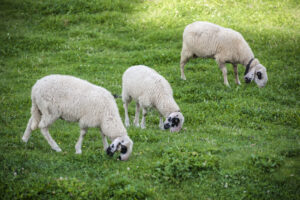
The pioneering work of French pasture scientist Andre Voisin revolutionized our understanding of overgrazing.
He was the first to propose that overgrazing was not a function of animal numbers but rather their behavior.
He observed that any plant would be overgrazed if animals were too static and grazed it too frequently or if animals returned to graze it before it had time to restore the growth of its roots, which were sacrificed to push up initial regrowth.
Holistic Planned Grazing process
Voisin also provided other information vital to my understanding of how livestock can be used as an essential tool to reverse global biodiversity loss and desertification and feed people.
His work confirmed why centuries of rotational grazing, pastoral herding, and all traditional methods of livestock management led to biodiversity loss. It became clear that these methods had to be replaced with a planning process capable of addressing daily and inevitable complications.
Initially, I used Voisin’s simple planning process, which he called “Rational” grazing, which seemed adequate for Europe’s non-desertifying environment but proved less suited to the larger global desertifying environment.
In the 1960s, I thought I had solved this issue by adopting a hundred years of European military planning experience designed for immediate battlefield situations that were complex and ever-changing.
After years of notable successes in reversing desertification in five countries, we began experiencing failures due to my having overlooked the social, cultural, and economic complexities that could not be isolated from nature’s complexity.
By 1983, with the help of many fellow scientists, I was able to address these issues, resulting in what is today known as Holistic Management with its Holistic Planned Grazing process.
By refraining from blaming animals and embracing the Holistic Planned Grazing process, we could address the multifaceted cultural, economic, and environmental complexities inherent in farm management and pastoral communities.
This approach enables us to support significantly larger animal populations, rapidly improving our environment.
Importantly, this is not merely my perspective but has been substantiated through official trials conducted internationally, notably in Zimbabwe during the 1960s and later in America by researchers at esteemed institutions such as Idoho and Ohio State Universities.
Conclusion
Through this conversation with Allan Savory, we explored the possibility of using livestock to reverse desertification.
Desertification is fundamentally a biological issue, requiring biological solutions.
Historically, sheep, goats, and cattle overgrazing was blamed for desert spread. However, insights from French scientist Andre Voisin revealed that overgrazing is not solely determined by animal numbers but by their interaction timing with plants.
Not only are herbivores not to blame for desertification, but observations show that large herbivores across much of the Earth’s land could combat desertification by breaking down vegetation, maintaining soil cover, retaining rainfall, and deterring desertification.
Moreover, their role in the decay phase of plant life is essential for regeneration. Therefore, excluding herbivores poses significant risks, exacerbating biodiversity loss, desertification, and mega-fires, which worsen climate change.
Human management practices seem responsible for desertification, and holistic management claims to demonstrate efficacy in restoring degraded landscapes. However, the reluctance to adopt such solutions begs the question: Is desertification primarily a political issue?
Did you like this article? Please leave us a comment below👇.
Read our second article with Allan Savory, focusing on the political dimension of combating desertification: here.

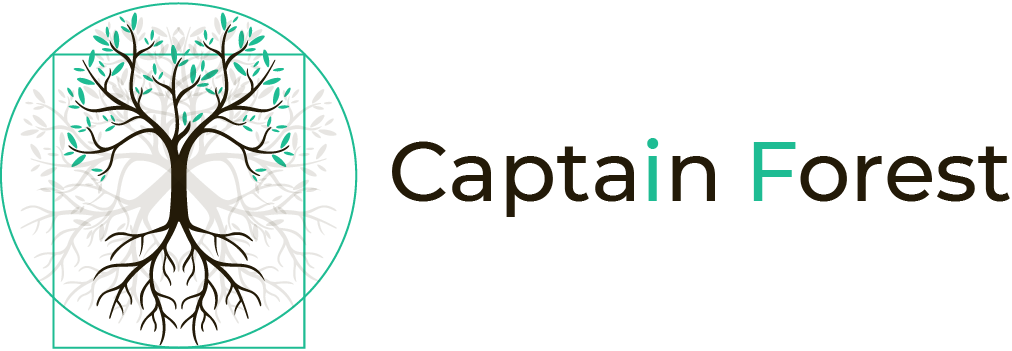


Thanks for the article, super interesting and has further opened my eyes. several levels:
for food production:
intensive animal farming (disaster), managed grazing, Holistic Planned Grazing (in this article)
for ecosystem health:
presence of fo wild herbivore and their predators